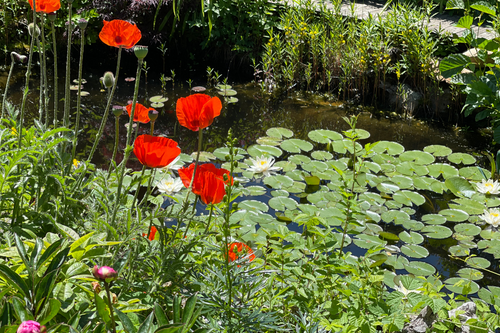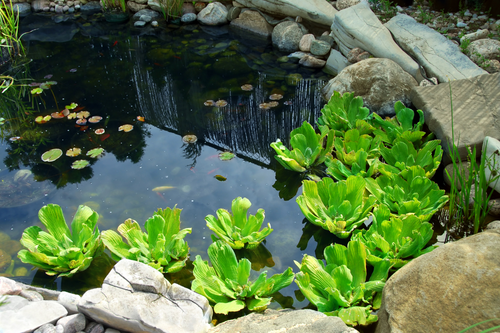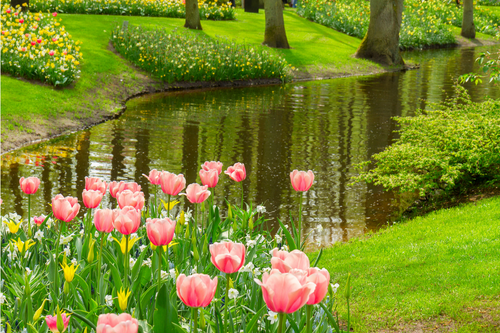The days are getting notably longer and there are signs that warmer weather is on its way. Spring marks a season of new beginnings. A time of year when beautiful, vibrant colours ascend from the ground. It’s a season that brings with it a feeling of happiness and we begin to feel so much more energized as we head outdoors. Gardens come alive and for those lucky enough to live in the country-side, there is the bleeping sounds of lambing season. We love it!
As the temperatures start to warm, creatures who hibernate begin to awaken and so too does life in a garden pond. There are things pond owners can do to make this period as stress free for wildlife as possible. When the temperature of pond water is consistently at or above 10 degrees C, it is time to take important steps to prepare both garden and pond for Summer so that we can enjoy the sheer beauty they offer.
In the early spring, a ponds ecosystem is in a fragile state with growing demands on oxygen supplies as fish become more active and the water gets warmer. To help your pond for Spring, here are a few important steps to make sure your pond gets a healthy start.

Spring garden pond maintenance:
- Start feeding your fish again.
- Skim dead leaves and debris off surface of pond
- Carefully remove this sludge from bottom of pond. Organic matter left in the pond will start to break down as bacteria become more active. Decomposition will cause pH levels to drop and increase nutrient levels in the water – which algae thrive on. You can use a skimmer net or pond vacuum to remove debris from the bottom of the pond. Whatever method you use, be careful not to remove or interfere with frogspawn. If you need to scrap debris off the bottom you also need to be careful not to damage the pond liner.
- Water evaporates on windy and when the temperatures are high. It is important that you maintain the water levels by topping-up with water – preferably filtered from a rainwater butt as tap water carries higher levels of nutrients, which may affect the ecosystem.
- Carefully remove your pond pump to check that it is in good working condition and remove any debris that may have got into the pumps mechanics.
- If your pond is looking sparse, this is a good time to add a few aquatic plants. The aim should be for plant foliage to cover a third of the water surface. Plant a combination of floating aquatics, submerged oxygenating plants and water lilies, along with marginal plants grown in the shallow water around the edges.

There is nothing more pleasing than a well-maintained water feature. A garden pond offers sound, movement, reflections, and a place to grow aquatic plants. But ignore your pond and it will become a muddy, weed-infested ‘eye-sore’.

Contact Us or visit our website to order any of our pond or garden related products.





